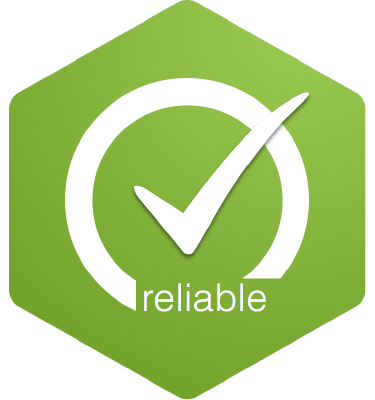How We Combat Doctor Hopping and Shopping in Our Clinic
Discover how our clinic combats doctor hopping and shopping, which are key behaviors fueling the opioid crisis. Learn our strategies for identifying high-risk patients and implementing safer prescribing practices.
Mercy Nwankama, CRNP-PMH, MSN
5/13/20243 min read


The Epidemic of Prescription Opioid Abuse
The opioid crisis in the United States has reached alarming levels, with prescription opioid abuse playing a significant role. At our clinic, we recognize that a disturbing behavior known as "doctor hopping" emerged, adding to the complexity of the crisis. Although new prescription guidelines have helped reduce "doctor hopping," the practice is very much alive as the perpetrators still find ways to circumvent the systems set in place. Doctor hopping involves patients bypassing nearby prescribers in favor of more distant ones, seeking multiple prescriptions, and potentially engaging in high-risk opioid use. This behavior, along with traditional "doctor shopping" and "pharmacy shopping," exacerbates the opioid crisis by enabling addicts and potential addicts to obtain large quantities of opioids.
Identifying and Addressing Doctor Hopping
In our clinic, we identify doctor hopping by analyzing patient-to-prescriber travel patterns. Patients who travel further than the nearest urban area and bypass more prescribers than 99% of other patients from the same zip code are considered doctor hoppers. This behavior is more common in rural areas and is associated with increased odds of high-risk opioid use. Unlike doctor shopping, which requires multiple prescriptions from various prescribers and pharmacies, doctor hopping can be detected after only two prescriptions, offering an earlier warning of potential misuse.
Understanding Doctor Shopping and Pharmacy Shopping
We also monitor for traditional doctor shopping, where patients seek out multiple prescribers and pharmacies to obtain larger amounts of opioids. As stated above, this behavior is more prevalent in urban areas and is strongly associated with high-risk opioid use. Pharmacy shopping, an extension of doctor shopping, involves visiting multiple pharmacies to fill opioid prescriptions, further complicating efforts to track and manage opioid prescriptions.
Recognizing High-Risk Behaviors in Our Patients
We look for several clues indicating potential doctor hopping and shopping:
Frequent Travel to Distant Prescribers: Patients who consistently travel long distances to see prescribers, especially bypassing numerous closer options, may be engaging in doctor hopping. For example, we had a patient who traveled from a rural area to our urban clinic, bypassing several local providers. This prompted us to investigate further.
Multiple Prescribers and Pharmacies: Patients with prescriptions from several different doctors and filled at multiple pharmacies in a short period may be doctor shopping. We encountered a case where a patient had prescriptions from four different doctors within two months, raising immediate concern.
High-Dose Prescriptions: Requests for high-dose opioid prescriptions, especially when combined with other centrally acting medications like benzodiazepines, can indicate high-risk behavior. A patient once requested a high dose of opioids along with a benzodiazepine, which led us to review their prescription history thoroughly.
Inconsistent Medical History: A lack of a clear or consistent medical history justifying the need for opioids can be a red flag. We had a patient whose medical records did not support their claims of chronic pain, suggesting possible misuse.
Payment Method Patterns: Patients using various payment methods, including cash, may be attempting to avoid detection through insurance records. We noticed a patient alternating between cash and insurance payments, which warranted a closer look.
Our Strategies to Address Potential Doctor Hopping and Shopping
We take several steps to address these issues:
Utilize Prescription Drug Monitoring Programs (PDMPs): We regularly check PDMPs to provide a comprehensive view of a patient’s prescription history, helping to identify suspicious patterns.
Conduct Thorough Assessments: Detailed medical assessments and patient history reviews help us determine the legitimacy of opioid requests.
Implement Safer Prescribing Practices: We limit the quantity and dosage of opioid prescriptions and increase patient education and counseling to reduce the risk of abuse.
Collaborate with Other Healthcare Providers: Communication and coordination with other prescribers and pharmacists prevent patients from obtaining multiple prescriptions.
Educate Patients: Providing information about the risks of opioid misuse and alternative pain management strategies helps reduce dependence on opioids.
Conclusion: Our Commitment to Combating the Opioid Crisis
The behaviors of doctor hopping and shopping significantly contribute to the opioid crisis in the US. By recognizing the signs of these behaviors and implementing proactive measures, we can play a crucial role in mitigating the risks associated with prescription opioid abuse. Incorporating spatial analyses into PDMPs and utilizing a combination of doctor hopping and shopping metrics can enhance early detection and improve patient safety, ultimately helping to combat the opioid epidemic. At our clinic, we are committed to these efforts to protect our patients and our community.
What We Do
At the Joy of Life Clinic, we offer administrative mental health services and treatments, and customize our services to meet your needs or your loved ones' specific needs. In our first meeting, we'll pinpoint current challenges and strategize the best solutions.
Comments: Comments are disabled for this post.

Home | About Us | Our Services | Blog | Terms & Conditions | Privacy | Telehealth | Forms & Resources | Appointments | Log In | Site Map | Contact Us
BY APPOINTMENT ONLY | NO WALK-IN
BEST WAY TO CONTACT US
Sign In to your account or Fill out the Contact Form or Appointment Form
or
Send us an Email at admin@jolclinic.com
Tel: (410) 231-3118 | Fax: (410) 262-6911
PATIENT RECORDS
To request your patient records, please sign in or go to the patient records information page.
Copyright © 2024 by the Joy of Life Clinic LLC.
4900 Belair Road
Baltimore MD 21206






